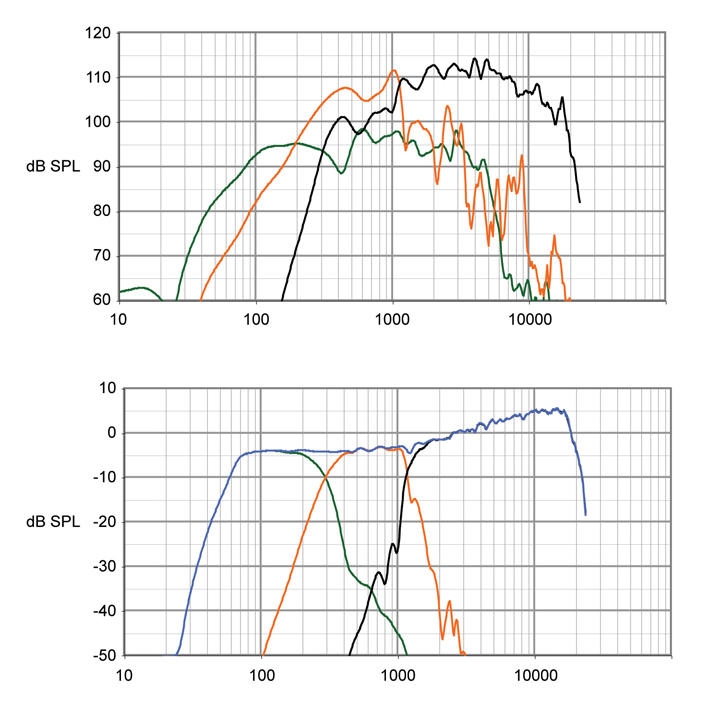Designer Notebook: Inside The Development Of The New EAW KF740 Line Array
The goals and metholodogy behind a new line array.
Transient Response
Another key factor in loudspeaker design is transient response, and this is optimized with a proprietary technology called Concentric Summation Array (CSA) technology.
Another key factor in loudspeaker design is transient response, and this is optimized with a proprietary technology called Concentric Summation Array (CSA) technology.
Essentially, CSA is an assortment of diamond-shaped openings for the mid frequency device that randomize and minimize the interference presented to the high frequency device.
Although not concentric, or coaxial, the KF740 uses the same technology to minimize the interference in the high frequency range.
Rather than one large aperture for the mid frequency, the opening is broken into several smaller diamond-shaped openings providing a consistent and minimal percentage of open area.
This reduces the amount of HF energy (emanating from the high frequency transducers) that can enter the void formed by the mid frequency devices and hence reflect back out at a later time.
HF response is significantly improved as the amount of reflected energy is reduced.
In addition, the apertures that fall in front of the central part of the MF cone are also located farthest back in the horn bell and therefore are closest together horizontally.
Because the upper frequency range of the MF generates from the central part of the cone, the configuration prevents unwanted beaming at the upper range of the mid-frequencies.
Then there is the aspect of horizontal symmetry. In our view, single section pass-bands on one side of the enclosure or the other produces output that is inherently asymmetrical.
Although the listeners are often a great distance from the loudspeaker array, the asymmetric design is hard to ignore and generally quite audible.
It might seem intuitive, then, to place the HF section in the middle of the cabinet, flanked by the LF section to one side, and the MF section to the other.
But this can cause abnormal summation characteristics between the MF section and the LF section due to the additional spacing between these sources.
Our approach with the KF740 and all EAW line array modules, on the other hand, keeps the spacing between individual pass-bands to a minimum.
The design is completely symmetric, creating identical sound reproduction on both sides of the loudspeaker/array.
Further, a passive low-pass filter drives the side-firing woofers to help prevent unwanted lobing, as well as to foster integration of the LF pass-band with the MF pass-band.
Another benefit of the symmetrical approach is a 50-50 weight distribution left to right, which helps balance arrays as they hang from a single point off the center of the fly bar.
Finally, sonic quality starts with the components, with the KF740 incorporating our latest developments in transducer technology. All offer neodymium magnets, with the dual 2.5-inch (again, 1.4-inch-exit) HF compression drivers utilizing a specially treated titanium diaphragm that provides additional hardness and improves response.
The two 8-inch MF cone drivers are driven by 3-inch voice coils, with their sealed aluminum chassis providing additional thermal dissipation while also preventing any unwanted modulation from the LF devices. The four 10-inch LF transducers are outfitted with 2.5-inch voice coils.
